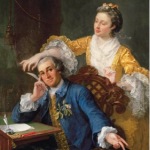 Today is the first day of Native American Heritage Month, and our guest post comes from Jessica Taylor, Assistant Professor of Oral and Public History, and Edward Polanco, Assistant Professor of Latin American History, both at Virginia Tech. A graduate of the College of William and Mary, Taylor is currently working on her first book manuscript, which examines Native landscape in the colonial Chesapeake. Polanco is a graduate of the University of Arizona, and his current book manuscript examines 16th- and 17th-century Nahua healing ritual specialists in Central Mexico. The following are keys to success identified by Taylor and Polanco in their development of a course on Native History at Virginia Tech.
Today is the first day of Native American Heritage Month, and our guest post comes from Jessica Taylor, Assistant Professor of Oral and Public History, and Edward Polanco, Assistant Professor of Latin American History, both at Virginia Tech. A graduate of the College of William and Mary, Taylor is currently working on her first book manuscript, which examines Native landscape in the colonial Chesapeake. Polanco is a graduate of the University of Arizona, and his current book manuscript examines 16th- and 17th-century Nahua healing ritual specialists in Central Mexico. The following are keys to success identified by Taylor and Polanco in their development of a course on Native History at Virginia Tech.
 Working through the first course proposal at a tenure-track job is intimidating, and more so when the topic is as enormous and fraught as “Native History.” To develop this course with care, we sought input and advice on and off campus as the process unfolded. These thoughts originated in a meeting between Virginia Tech’s Native students’ group, Native@VT, the American Indian and Indigenous Community Center on campus, and the Department of History. We wanted to share some of our ideas and strategies as we continue to develop our Native History class and advocate for a more visible Native presence on campus. This has put our Department’s and University’s commitment to diversity into action.
Working through the first course proposal at a tenure-track job is intimidating, and more so when the topic is as enormous and fraught as “Native History.” To develop this course with care, we sought input and advice on and off campus as the process unfolded. These thoughts originated in a meeting between Virginia Tech’s Native students’ group, Native@VT, the American Indian and Indigenous Community Center on campus, and the Department of History. We wanted to share some of our ideas and strategies as we continue to develop our Native History class and advocate for a more visible Native presence on campus. This has put our Department’s and University’s commitment to diversity into action.
 Today at The Junto, Philippe Halbert interviews Katherine Egner Gruber, who is Special Exhibition Curator at the
Today at The Junto, Philippe Halbert interviews Katherine Egner Gruber, who is Special Exhibition Curator at the 





